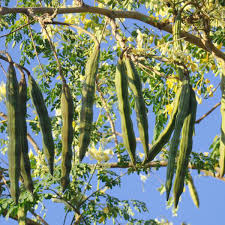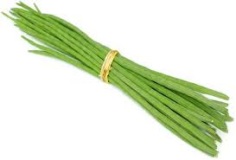- Store
- >
- Medicinal Plants
- >
- Moringa seeds, Moringa oleifera, 3 sizes
Moringa seeds, Moringa oleifera, 3 sizes
AKA drumstick tree, the miracle tree, the 'ben oil' or benzoil tree, and the horseradish tree. Moringa is native to parts of Africa and Asia, and is the sole genus in the flowering plant family Moringaceae. The name is derived from murungai, the Tamil word for drumstick. Moringa Trees are now cultivated all over the world because they are highly valued as an edible plant that is extremely high in nutrients (iron, vitamin C, etc.), for its many medicinal qualities, as well as for its beautiful ornamental features.
The leaves, pods, and seeds are all edible. Even the roots are edible, having a mild horseradish flavor. Moringa leaves, pods and seeds have more vitamin C than four oranges combined, as well as high amounts of calcium, potassium, iron, zinc and other beneficial nutrients including fiber.
Medicinally, moringa has antifungal, antioxidant, antiviral, anti-depressant and anti-inflammatory properties. It is used in many parts of the world to kill cancer cells, regulate blood sugar, reduce joint pain, lower cholesterol, and promote heart heath.
By cooking the leaves in boiling water to make tea, or eating them fresh like vegetables, you'll boost your immune system. The whole seed pods are often cooked just like green beans; while the seeds are best eaten when baked, like pumpkin seeds.
There are many ways to plant Moringa seeds. They prefer tropical, sub-tropical and Mediterranean climates. Frost will make the leaves fall and the tree goes dormant. They are grown commercially in California, and do well in Florida and southern Texas. Some moringa growers soak the seeds for a few days, some plant them in pots, some sow them directly into the ground.
Best results may be obtained from starting the seeds in small pots, planted in loose, organic potting soil that has some coconut coir mixed in with it, but they sprout well in most soils. They do not care for hard clay, heavily compacted soil, vermiculite, or peat pots. Soil must be well-draining, no standing water with wet feet.
Plant them about 3/4 to 1 inch deep, and tamp the soil down on top of them loosely. Then, water them thoroughly, put them in a warm place with as much light as possible, and wait. You can give them a little water every day, until they sprout; then, every other day, water until the soil on top is moist. Too much water and they will drown!
Once they are about eight inches tall, plant them right into the ground or transfer them into larger pots.
Perlite mixed into the organic potting soil, or your own loose soil, is fine, but remember, NO vermiculite.
Established plants can grow two feet per month.





